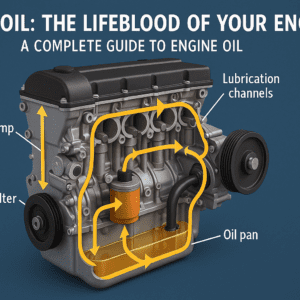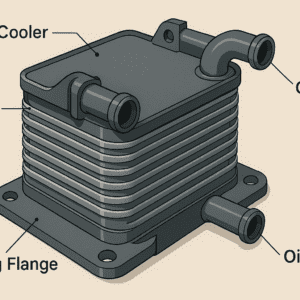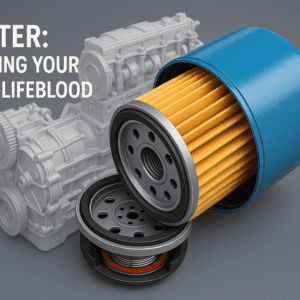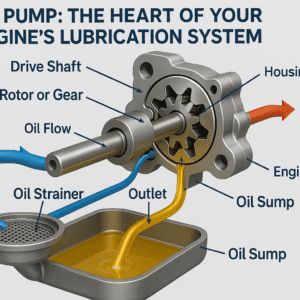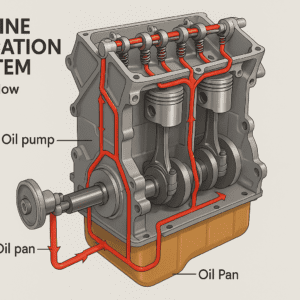
1. Introduction to PRV Valves
1.1. Definition and purpose of PRV valves

PRV valves, or Pressure Relief Valves, are like the safety guards of lubrication systems. They’re there to make sure things don’t get too intense pressure-wise. I remember when I first learned about them – it was like discovering a hidden superhero in the world of machinery!
Read more about lubrication system, click on this link: Lubrication System
1.2. Components of a typical PRV valve
A typical PRV valve has a few key parts:
- The valve body
- A spring
- A disc or piston
- An adjusting mechanism
It’s amazing how these simple parts work together to keep our systems safe. It reminds me of a well-orchestrated team, each component playing its part perfectly.
1.3. How PRV valves function in lubrication systems
PRV valves are always on guard, ready to spring into action when pressure gets too high. They open up to let excess fluid flow out, keeping the pressure at a safe level. It’s like they’re the pressure police, always making sure everything’s under control!
Read more about oil pump, click on this link: Oil Pump
2. Types of PRV Valves
2.1 Direct-Acting PRV Valves

Now, let’s focus on a specific type: direct-acting PRV valves. These are the simple, no-nonsense members of the PRV family.
Components of a Direct-Acting PRV Valve
- Spring: This is like the muscle of the valve.
- Disc: Think of this as the door that opens and closes.
- Nozzle: This is where the excess pressure escapes.
- Adjusting mechanism: It’s like the valve’s brain, telling it when to act.
How Direct-Acting PRV Valves Function
Here’s where it gets interesting. When the pressure builds up, it pushes against the disc. The spring pushes back, but if the pressure is too high, the disc moves and lets some of the pressure out. It’s like a perfect little dance!
Benefits of Direct-Acting PRV Valves in Lubrication Systems
- Simplicity: These valves are straightforward and reliable.
- Quick response: They react fast to pressure changes.
- Low maintenance: They don’t need much fussing over.
- Cost-effective: They’re often cheaper than other types.
Common Issues and Troubleshooting
Sometimes, things don’t go as planned. Here are some common hiccups:
Incorrect pressure settings: Double-check those settings!
Leaking: This could mean it’s time for a replacement.
Sticking: The valve might need a good cleaning.
If you want to visit to website to get more about Automobile information, please click on this link: Autobiography Zone
2.2. Pilot-operated PRV valves

Hey there! Let’s chat about pilot-operated PRV valves. These nifty devices are like the superheroes of pressure relief systems. They’re designed to handle big jobs where you need to control high pressures or large flow rates.
The cool thing about pilot-operated valves is that they use a small pilot valve to control the main valve. This setup allows for more precise pressure control and faster response times. It’s like having a mini-assistant that helps the main valve do its job better!
These valves are great for industrial applications where you need to keep things running smoothly and safely. They’re a bit more complex than regular PRV valves, but they’re worth it when you need that extra level of control.
2.3. Balanced piston PRV valves

Hey there, fellow valve enthusiasts! Today, let’s chat about something really cool in the world of pressure relief: balanced piston PRV valves. These nifty devices are like the superheroes of pressure control, working hard to keep our systems safe and sound.
Balanced piston PRV valves are pretty special because they’re designed to open and close smoothly, even when the pressure’s all over the place. They’ve got this clever setup with a piston that balances out the forces, so they don’t get all jumpy when things get intense. This means they’re super reliable and can handle big pressure changes like champs.
What’s really great about these valves is how versatile they are. They work well in all sorts of systems, from industrial plants to your home’s plumbing. Plus, they’re known for being accurate and consistent, which is exactly what you want when dealing with pressure control.
So, next time you hear someone talking about balanced piston PRV valves, you can nod knowingly and think, “Yep, those are the steady, dependable ones that keep things running smoothly!” Pretty cool, right?
Read more about oil sump, click on this link: Oil Sump
3. Importance of PRV Valves in Lubrication Systems

3.1. Pressure regulation and system protection
PRV valves are crucial for keeping pressure in check and protecting the whole system. Without them, it would be like driving a car without brakes – scary and dangerous!
3.2. Preventing equipment damage
By controlling pressure, PRV valves help prevent damage to expensive equipment. They’re like guardian angels for your machinery, always watching out for potential harm.
3.3. Maintaining optimal lubrication flow
PRV valves ensure that lubrication flows smoothly and consistently. It’s like they’re conducting a symphony of oil, making sure every part of the machine gets the right amount at the right time.
Read more about engine, click on this link: Engine
4. Installation and Maintenance of PRV Valves

4.1. Proper placement within the lubrication system
Placing PRV valves correctly is super important. It’s like finding the perfect spot for your TV – get it wrong, and you won’t get the best performance.
4.2. Calibration and adjustment procedures
Calibrating and adjusting PRV valves can be tricky, but it’s essential for optimal performance. It reminds me of tuning a guitar – it takes some skill, but the result is sweet music (or in this case, a smoothly running system).
4.3. Regular inspection and cleaning routines
Regular check-ups and cleaning are a must for PRV valves. It’s like going to the dentist – not always fun, but necessary to prevent problems down the line.
5. Troubleshooting Common PRV Valve Issues

5.1. Identifying valve leaks and causes
Leaks can be sneaky, but there are usually tell-tale signs. It’s like being a detective, looking for clues to solve the mystery of the leaking valve.
5.2. Addressing pressure fluctuations
Pressure ups and downs can be a headache. Figuring out why they’re happening is like solving a puzzle – challenging but satisfying when you get it right.
5.3. Resolving valve sticking or seizure
A stuck valve is no fun. It’s like having a jammed door – frustrating, but usually fixable with the right approach and a bit of patience.
6. Selecting the Right PRV Valve for Your System

6.1. Considering system pressure requirements
Choosing the right PRV valve starts with knowing your system’s needs. It’s like picking the right shoes for a hike – you need to consider the terrain (or in this case, the pressure).
6.2. Evaluating flow rate capacity
Flow rate is crucial when selecting a PRV valve. It’s like choosing the right size pipe for your plumbing – too small, and you’ll have problems; too big, and you’re wasting resources.
Read more about firefighting, click on this link: Firefighting
6.3. Material compatibility and environmental factors
The valve’s materials need to play nice with your system and surroundings. It’s like choosing the right outfit for the weather – you want something that can handle the conditions.
7. Future Trends in PRV Valve Technology

7.1. Smart PRV valves with integrated sensors
The future of PRV valves is getting smarter. Imagine valves that can tell you how they’re doing and what they need – it’s like having a personal assistant for your lubrication system!
7.2. Advancements in valve materials and design
New materials and designs are making PRV valves better than ever. It’s exciting to think about how these improvements will make our systems even more efficient and reliable.
7.3. Integration with predictive maintenance systems
PRV valves are joining the predictive maintenance revolution. It’s like having a crystal ball that tells you when your valve needs attention before problems occur.
8. Conclusion
PRV valves are the unsung heroes of lubrication systems, keeping everything running smoothly and safely. From understanding their types and importance to proper maintenance and future trends, there’s a lot to know about these vital components. Remember, a well-maintained PRV valve is key to a happy, healthy lubrication system!
9. Frequently Asked Questions (FAQs)
1. How often should I inspect my PRV valves?
Hey there, fellow PRV valve owner! It’s great that you’re thinking about valve maintenance. Generally, you should inspect your PRV valves at least once a year.
During these inspections, look for any signs of wear and tear, leaks, or unusual noises. It’s like giving your car a regular once-over – a little attention now can save you from bigger headaches down the road!
2. Can I install a PRV valve myself, or should I call a professional?
Oh, the eternal DIY question! While it’s tempting to roll up your sleeves and tackle this job yourself, installing a PRV valve is usually best left to the pros. Here’s why:
- PRV valves are crucial for maintaining proper oil pressure in your system.
- Incorrect installation can lead to damage or inefficient operation.
- Professionals have the right tools and know-how to ensure everything’s hooked up correctly.
That said, if you’re particularly handy and have experience with plumbing work, you might be able to handle it. Just be sure to follow the manufacturer’s instructions to the letter and don’t hesitate to call for help if you’re unsure about anything.
3. What are the signs that my PRV valve needs replacement?
Good question! Your PRV valve might be waving a white flag if you notice:
- Fluctuating oil pressure
- Unusual noises coming from systems
- Visible leaks or corrosion on the valve itself
If you spot any of these signs, it’s time to give your PRV valve some attention. Think of it like when your car starts making funny noises – better to check it out sooner rather than later!
4. How do I choose between a direct-acting and a pilot-operated PRV valve?
Ah, the great PRV valve debate! Choosing between direct-acting and pilot-operated valves really depends on your specific needs. Let’s break it down:
Direct-acting valves:
- Great for smaller systems or residential use
- Simple design makes them reliable and easy to maintain
- Work well with varying flow rates
Pilot-operated valves:
- Better for larger systems or industrial applications
- More precise pressure control
- Can handle higher flow rates
If you want to visit to website to get more about Automobile information, please click on this link: Autobiography Zone
